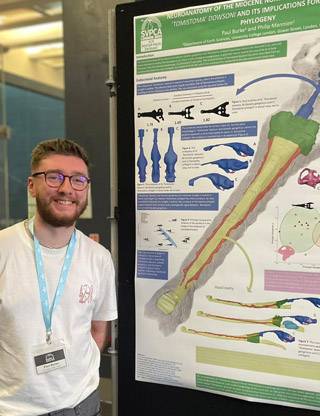"Combining data on living and extinct species, incorporating anatomy, ecology & phylogenetics to address key questions about the evolutionary history of crocodylians."
PhD project title:
Using computed tomography to investigate gavialoid neuroanatomy to aid crocodylian phylogeny.
 Project description:
Project description:

First appearing in the Cretaceous, approximately 80 million years ago, Crocodylia is a clade of semi-aquatic, predatory reptiles. There has been a long-standing disagreement between morphological and molecular datasets surrounding the affinities of the two extant gharials, Gavialis gangeticus and Tomistoma schlegelii. Molecular data has consistently supported a sister taxon relationship between the two species; morphological data, however, indicates that Gavialis is the sister taxon to all other extant crocodylians. This discrepancy has recently been reconciled, such that morphological data now also support Gavialis as more closely related to Tomistoma, however a large issue regarding the phylogeny of Gavialodiea remains.
I will be using high-resolution computed tomography (CT) to visualise internal neuroanatomic features in selected well-preserved skulls of putative gharial relatives (gavialoids). The newly collected anatomical data will then be incorporated into a recently published morphological character dataset, comprising of nearly all extinct and living crocodylian species, and many closely related species. I will then use phylogenetic analyses to determine if the new data reconciles the temporal incongruence surrounding Gavialodiea, as well as phylogenetic comparative methods to test for correlations between inner ear size and ecology. This will allow me to evaluate whether some features are linked to ecology. My project will combine data on living and extinct species, incorporating anatomy, ecology and phylogenetics to address key questions about the evolutionary history of crocodylians.
 Close
Close

